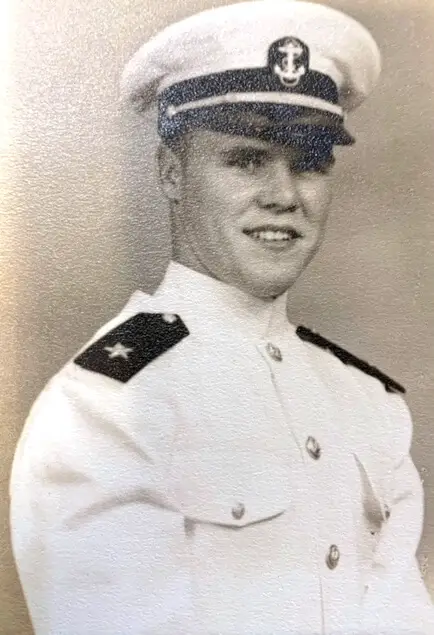What is the Defense POW/MIA Accounting Agency?
I recently received an unexpected, lengthy report from the Defense POW/MIA Accounting Agency (DPAA). The agency’s mission is to provide “the fullest possible accounting for our missing personnel to their families and the nation.”
The report was eight pages long. It was entirely about the efforts being made by the agency to find the remains of my uncle, the pilot of a Vought F4U-1D Corsair plane as a member of the US Marine Corps Reserve in World War II.
I requested the report when responding to the agency’s announcement of a meeting held by the organization to provide information on missing service members. The meeting was canceled or delayed due to a lack of appropriations upon the pending expiration of a continuing resolution. As I was unable to attend, the agency forwarded the report.
While the report concerns an event that occurred more than 80 years ago, it continues to pursue available information. While the people who knew my uncle have all died after the passage of so many years, as a surviving family member, the information is still very important. The dedication demonstrated by the extent of the information just provided is deeply appreciated. The report also noted as a conclusion:
To support future field operations in Japan, DPAA’s Indo-Pacific Directorate continues to develop a working relationship with the Government of Japan’s Ministry of Health, Labor, and Welfare’s (MHLW) Social Welfare and War Victims’ Relief Bureau, which is considered DPAA’s counterpart. (footnote deleted) Over the last decade, the Japanese government has actively searched for over 600,000 of their missing throughout the Pacific region….
His plane was shot down during a fighter sweep in the vicinity of the Kure Naval Base, Honshu, Japan, in March 1945. The American military was preparing for an invasion of Japan. The number of American casualties projected from this invasion ranged from 400,000 to 800,000 American fatalities for the entire campaign, with total casualties (including wounded) ranging from 1.7 to 4 million. The atomic bombings and Japan’s surrender in August 1945 ultimately averted this invasion.

The report explained why the US military was operating in this area near Japan, the objective of the Navy’s ships in the area, and why this area had strategic significance. The report stated, “At 0545 hours on 19 March 1945, Bennington launched 16 Corsairs, including 2nd Lt Russell, for a fighter sweep of the new Japanese military airfield at Hiroshima. The mission’s intent was to ‘clear the skies of any enemy opposition’ that could challenge later American strikes on the Japanese fleet at Kure.”
The report explained in some detail the number of aircraft lost or destroyed, the number of men killed on the mission, that my uncle’s plane was hit by fire from enemy aircraft deep in enemy territory, and a parachute deployed that believed to be his parachute, but that “U.S. forces did not conduct a search for him because he was lost deep in enemy territory.”
My parents and grandparents never knew that investigators “found no report of interment on file for 2nd Lt Russell indicating that his remains were not knowingly recovered or buried by American forces during search and recovery operations in Japan” and that research included comparing his dental chart with missing remains that were found in Japan.
Furthermore, “DPAA has no evidence to support that he was ever a POW or alive in enemy hands, which indicates that 2nd Lt Russell was likely killed in the crash of his aircraft, while parachuting or upon impact with the ground, or by the enemy prior to any documentation of capture.”
America is a Compassionate, Generous Nation
America is a generous, compassionate nation. This is reflected in the fact that efforts are still being made to recover the remains of those who went missing. 80 years later, efforts are still being made, and some of these efforts have been successful.
As one example, in the spring of 1944, the mother of 2nd Lt. Thomas V. Kelly Jr received a letter informing her that her son was killed in action. His plane was hit by antiaircraft fire and disintegrated during a mission in New Guinea. Lt. Kelly and 10 other men were aboard the B-24 bomber when it was shot down over the Pacific Ocean. The remains recovered from a remote area of the sea more than 200 feet deep arrived in the U.S. after an extraordinary 10-year effort.
A Mother and Others Never Forget
While I was very young, I will never forget asking my grandmother about the man after whom I had been named. Having been given his name when born, I wanted to know more about him and what he was like.
She recounted several of her favorite memories of what he was like and how she remembered him. She brought out several pictures of Ralph taken shortly before he departed from the West Coast on his last assignment. In the photo, he was on a date with a woman he had met in San Diego, and another couple accompanied them.
My grandmother broke down sobbing, looking at the photos of him laughing, happy, and enjoying the company of a young woman about whom he had expressed an interest in seeing again when he returned from the war, and wondering how his life would have turned out had he returned.
The United States lost approximately 418,500 military personnel and civilians in World War II. The intense loss felt by my family was undoubtedly repeated throughout the country hundreds of thousands of times by those families.
The efforts of the DPAA employees are obviously appreciated by many of these families. While those working for the agency (military and civilian) often have no way of knowing how much their efforts may have been appreciated, this is one attempt to know how much of an impact their efforts may have on the remaining family members.


